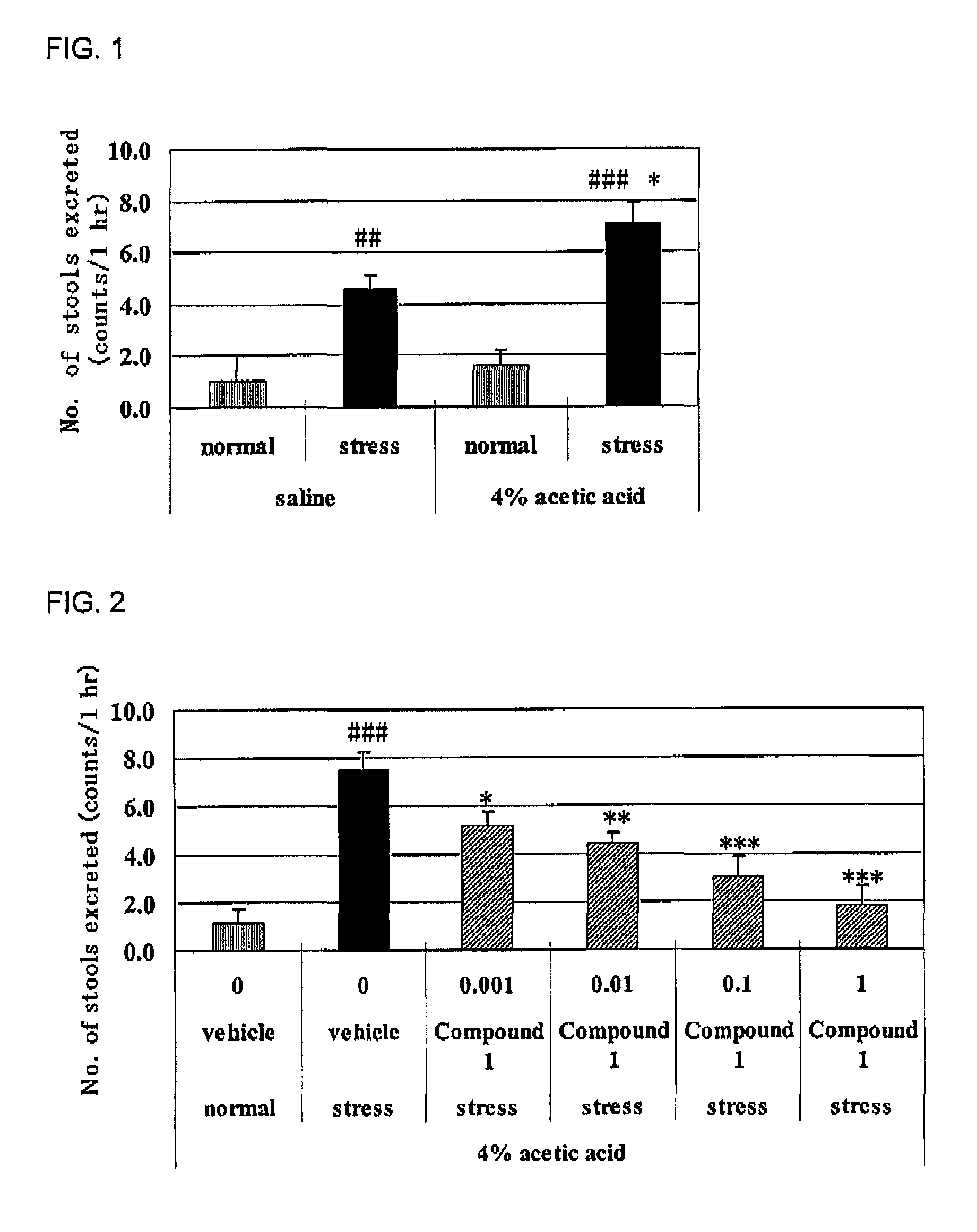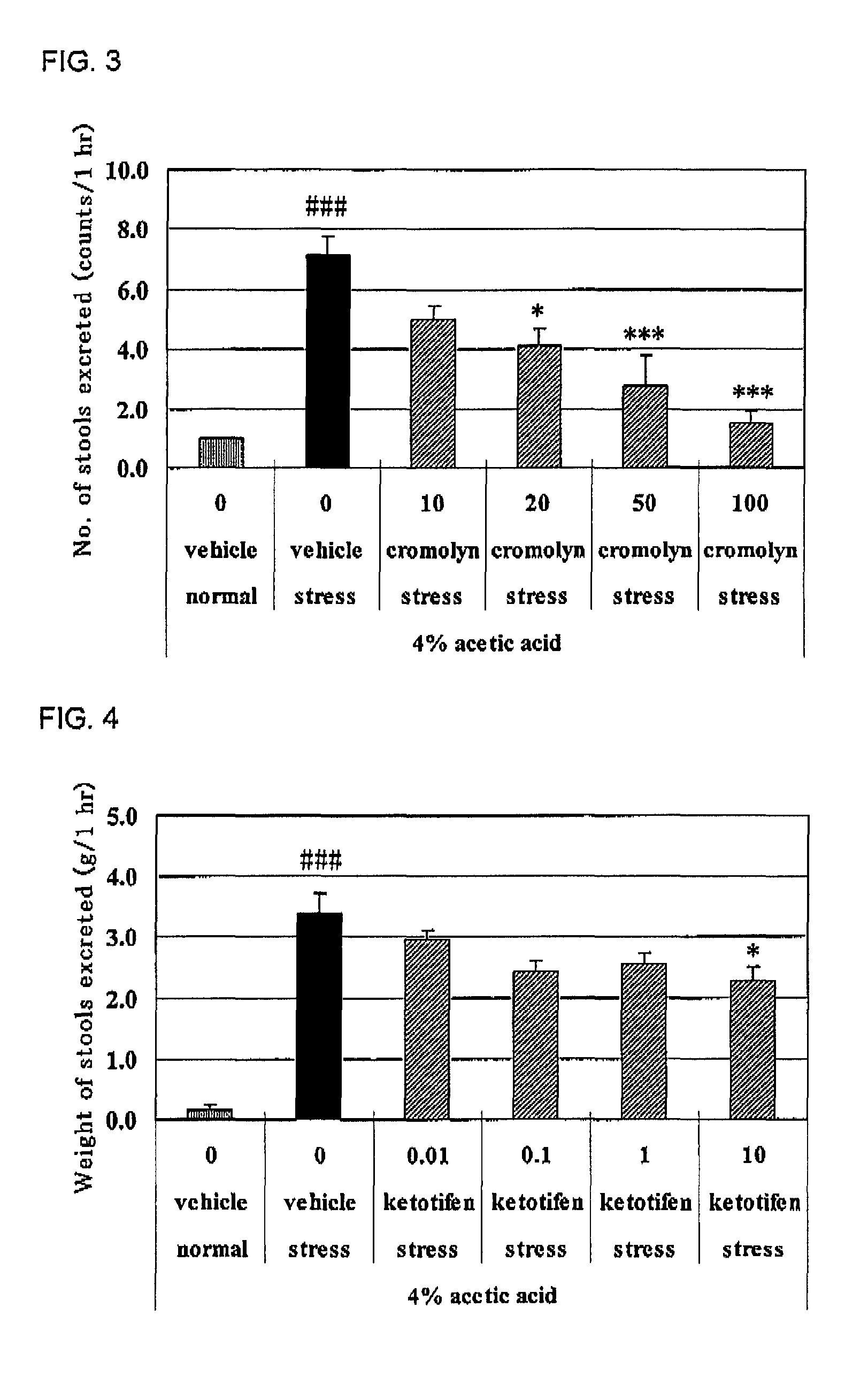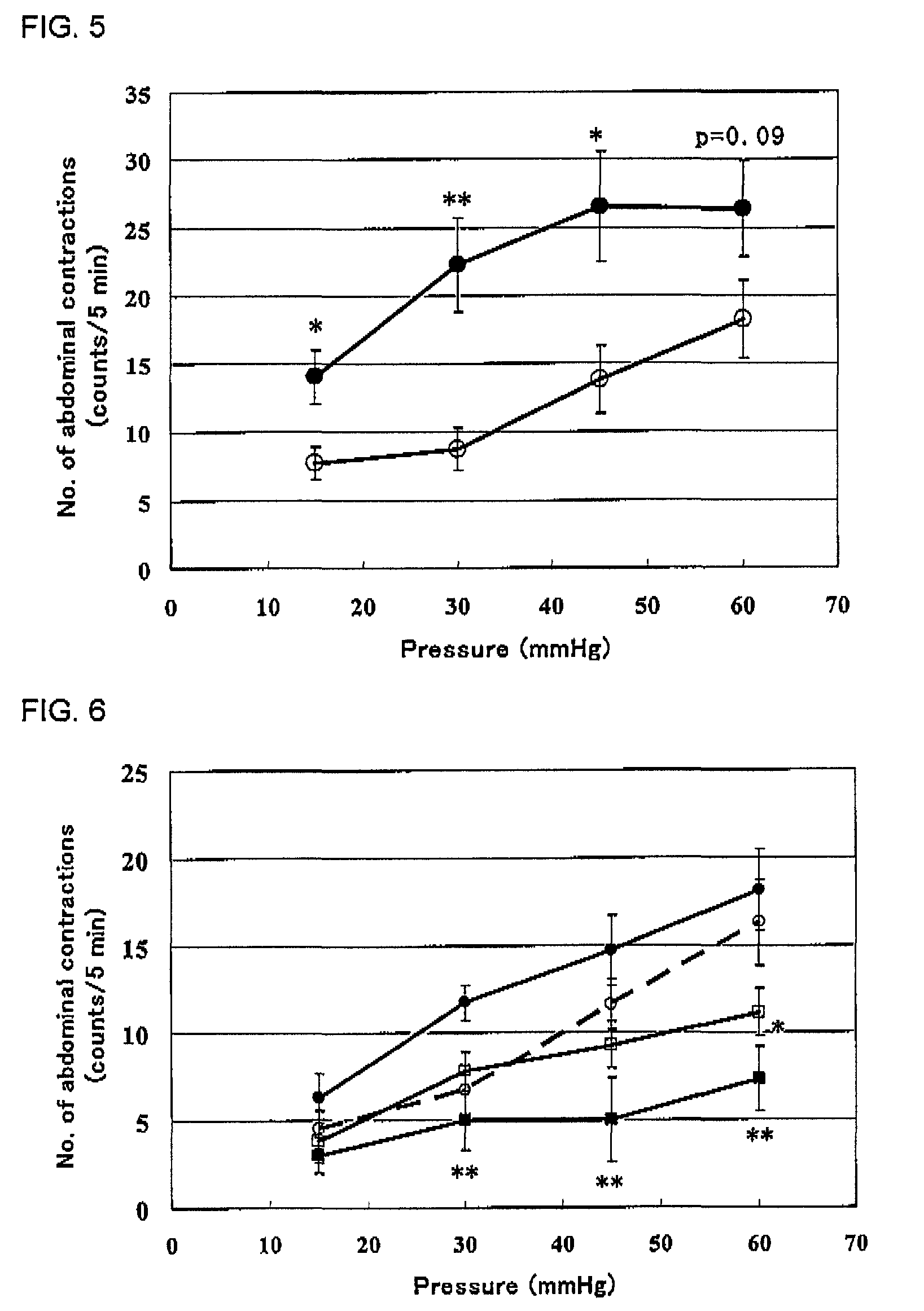Treatment for irritable bowel syndrome
a technology for irritable bowel syndrome and agents, which is applied in the direction of drug compositions, biocides, heterocyclic compound active ingredients, etc., can solve the problems of difficult social activities for patients, limited efficacy, and limited effect, and achieve the effect of superior ibs treatment
- Summary
- Abstract
- Description
- Claims
- Application Information
AI Technical Summary
Benefits of technology
Problems solved by technology
Method used
Image
Examples
example 1
Preparation of Acetic Acid-Induced IBS Model
[0063]Preparation of an IBS model was carried out by the following method with reference to the method of Jun-Ho La et al. (World J. Gastroenterol., 2003, vol. 9 (12), pp. 2791-2795). Male Sprague-Dawley (SD) rats or Wistar rats after an overnight fast were used. Colitis was induced by intracolonic instillation of 1 ml 4% acetic acid at 8 cm proximal to the anus for 30 seconds under light ether anesthesia. Then, 1 ml physiological saline was instilled to dilute the acetic acid and flush the colon twice. Rats were recovered from colitis for 6 days, and used for experiments shown in Examples 2 and 3 at 7 days after induction of colitis as “IBS rat (4% acetic acid)”. In addition, rats received physiological saline instead of acetic acid was used as a “control group (saline)”.
[0064]In this connection, it was confirmed that the activity of myeloperoxidase (MPO) which is an index of intestinal inflammation increases 1 to 2 days after intracoloni...
example 2
Restraint Stress-Induced Defecation in Rats
[0065]Cromolyn was used by dissolving it in physiological saline, and compound 1 and ketotifen were used by dissolving them in 0.5% methylcellulose aqueous solution, respectively. Each compound was intraperitoneally administered (cromolyn) or orally administered (compound 1 and ketotifen) to male SD rats under no fasting at 7 days after the 4% acetic acid treatment or physiological saline treatment. The animals were put into restraint stress cages (product name: KN-468 (B), mfd. by Natsume Seisakusho) 30 minutes thereafter and the number and weight of the stools excreted for 1 hour were measured (“stress”). On the other hand, the normal group was put into individual cage and the number and weight of the stools excreted for 1 hour were measured in the same manner (“normal”). Results of the restraint stress-induced defecation in the agent-nonadministered group are shown in FIG. 1, and the results of agent-administered groups in FIGS. 2 to 4 r...
example 3
Viscerosensory Response to Colorectal Distention with Evaluation of the Number of Abdominal Contractions as the Index
[0069]Cromolyn was used by dissolving it in physiological saline, and compound 1, alosetron and ramosetron were used by dissolving them in 0.5% methylcellulose aqueous solution, respectively. Male Wistar rats under no fasting at 7 days after 4% acetic acid treatment or physiological saline treatment were used. Under light ether anesthesia, a latex balloon of 6 cm in length was inserted intra-anally until the end of the balloon was 2 cm inside the rectum. The catheter connecting from the balloon was fixed to the tail base with a tape and connected to a pressure transducer via a three-way cock. After restoration from the ether anesthesia in a cage (23.5×19×19 cm), nociceptive behavior (the number of abdominal contractions) to colorectal distention (15, 30, 45, 60 mmHg) applied stepwise at 5 minute intervals was measured. As shown in FIG. 5, significant viscerosensory re...
PUM
| Property | Measurement | Unit |
|---|---|---|
| weight ratio | aaaaa | aaaaa |
| weight ratio | aaaaa | aaaaa |
| length | aaaaa | aaaaa |
Abstract
Description
Claims
Application Information
 Login to View More
Login to View More - R&D
- Intellectual Property
- Life Sciences
- Materials
- Tech Scout
- Unparalleled Data Quality
- Higher Quality Content
- 60% Fewer Hallucinations
Browse by: Latest US Patents, China's latest patents, Technical Efficacy Thesaurus, Application Domain, Technology Topic, Popular Technical Reports.
© 2025 PatSnap. All rights reserved.Legal|Privacy policy|Modern Slavery Act Transparency Statement|Sitemap|About US| Contact US: help@patsnap.com



